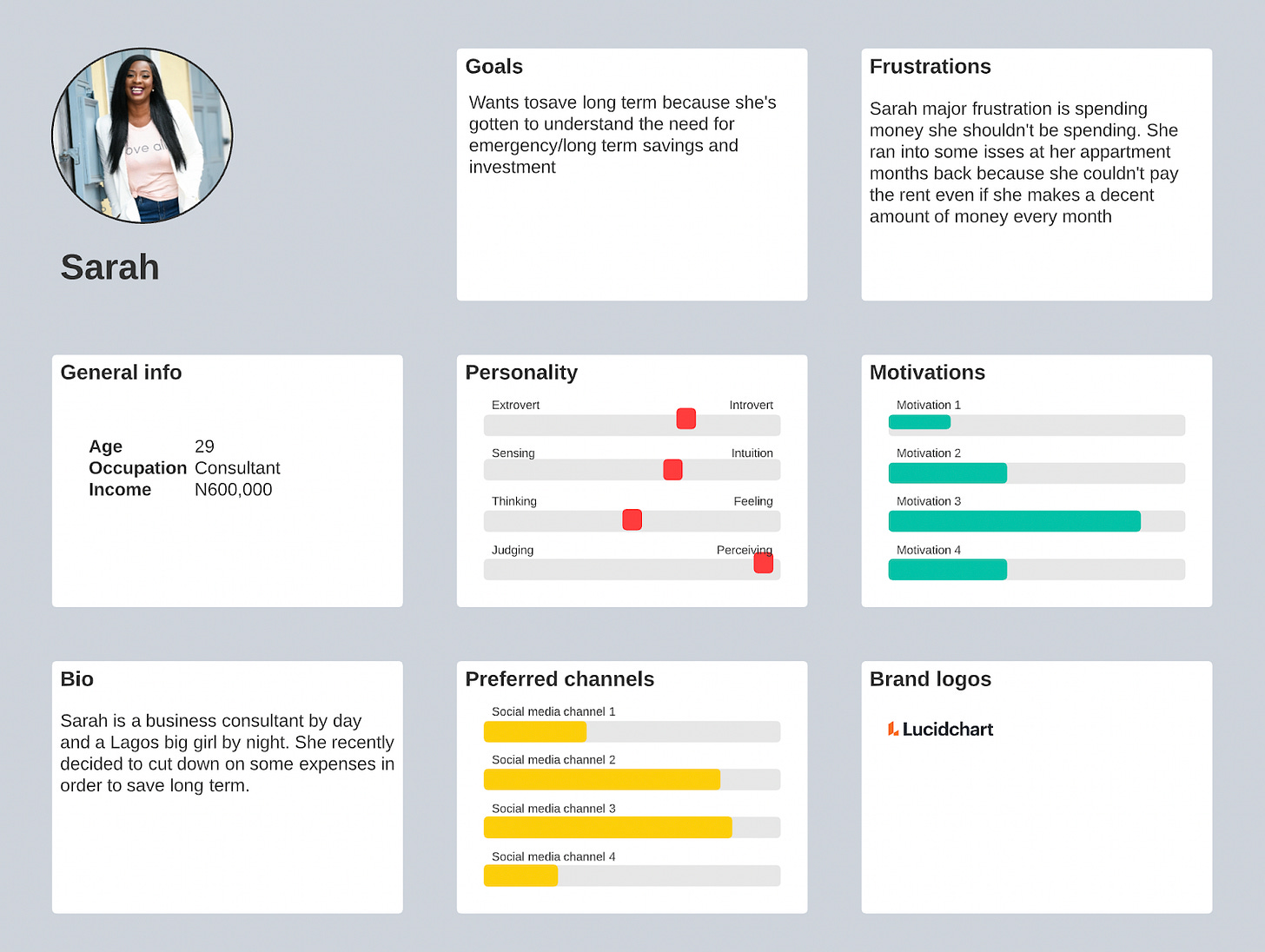In my last article, I wrote a bit about the importance of personas. Here, I’ll be explaining how to come up with personas for your product or service. Many organizations offer just one product but have hundreds, thousands and even millions of users. Think about it. 1 product/service, 10,000 users. That’s 10,000 people with different needs and reasons for using your product. It’s hard to make your marketing speak to 10,000 people who have different reasons for using your product, even if these people are your target audience.
The marketing appeal that may work for a certain group may not work for another. So to make sure that you’re speaking to every group and no one is left out, you need to create personas.
What is a persona?
A persona is a fictional character developed to represent a user type who might interact with a website, business, or product in a similar way. Since your product exists to be used, creating personas should always be on your mind regardless of your product's stage in its lifecycle.
Think about it this way:
Pete, Sarah and Flora all use the same savings and investment app. Pete just graduated from college and is saving up for his first car, Sarah is saving long-term because she now understands the value of ‘saving for rainy days’ after a bad experience she had a while back and Flora on the other hand is saving for a company she plans to start later in the year.
Though they fundamentally have one reason for picking this product; to save money, their reasons for saving are very different. This significantly affects how each of them views the app. For now, Pete sees the app as his one-way ticket to getting his dream car, Sarah sees it as her key to financial freedom and Flora sees it as something that will help her career flourish, thereby leading to self-actualization.
A campaign about how using the app can help you save towards checking off your birthday wish list won’t really appeal to Sarah but Pete because this is his primary reason for using this product. In order not to keep marketing to only the ‘Petes’ of the product while neglecting the people who use it for many other things, personas are important.
More on the importance of Personas
It doesn’t stop at the target audience. Knowing your target audience is great but this isn’t as specific as it gets because the use cases within your target audience differ.
They help your support team
Building personas help your support team effectively communicate with customers because they get a better idea of the type of people using the product and how they view the product. As a result, it becomes easier to know which angle to address a concern, question or issue when a customer reaches out to them because they have a better insight into why different customers use your product. All these help create a much better experience for the customers.
They help you build an all-inclusive marketing strategy
Building personas help you market to all segments. Sometimes, it’s easy to get carried away with what you think people use your product for and just speak to that aspect. Personas help you know that customers can view and use your product differently even if they fundamentally have the same problem. Tailoring your marketing to ensure that you address the different segments effectively at different times help you increase customer loyalty, thereby reducing churn.
Also, remember that products are the ones that have personas, not the company, so if you have 3 different products you need to build personas for each of those products instead of having company-wide personas that are used across different products.
How many personas do I need?
This isn’t cast in stone so there is no fixed number that you need, however, it’s best to steer clear of extremes. You don’t want to have just 1 persona and you don’t want to have 20 personas for 1 product. The number should largely depend on the product/service and as time goes on, the customer base. Somewhere between 3-5 personas for each product is very decent.
Creating your personas
Who?
Goes without saying that your personas are users of your product, however, when speaking with customers, it’s important to speak with both old and new ones. I like to think that new customers are more likely to give very authentic results. Since they haven’t been around for long, they tend to have a better recollection of exactly why they use your product, thereby giving specific and non-generic answers
Questions?
It’s important to ask clarifying and open-ended questions so you can get as much detail as possible. Follow-up questions are also very important.
Using the example earlier given, asking a generic question like ‘Why do you use this savings and investment app?’ will only get you an answer like ‘I use this platform because I want to set some money aside for things I’d like to do’.
An answer like that doesn’t really help you come up with anything. However, going on to ask the reason they save will give you more specific answers like- “I save because I want to get something I like”, “I save because I want to prepare for the future”, “I save because I need to start a business”. These answers give you more insight and put you in a better position to understand their use case for your product.
Your focus should be on them and the job they pay your product to perform in asking questions. Don’t make the mistake of asking questions that isolate the product.
Wrong persona, wrong product
Asking the right questions is important because it’s the only way you get the appropriate answers. Right answers help you form the right marketing strategies as well as build the right products. Because of this, this process should be taken seriously, as creating a wrong persona will lead to the wrong product.
If you enjoyed reading this, please share.



This is a good write up